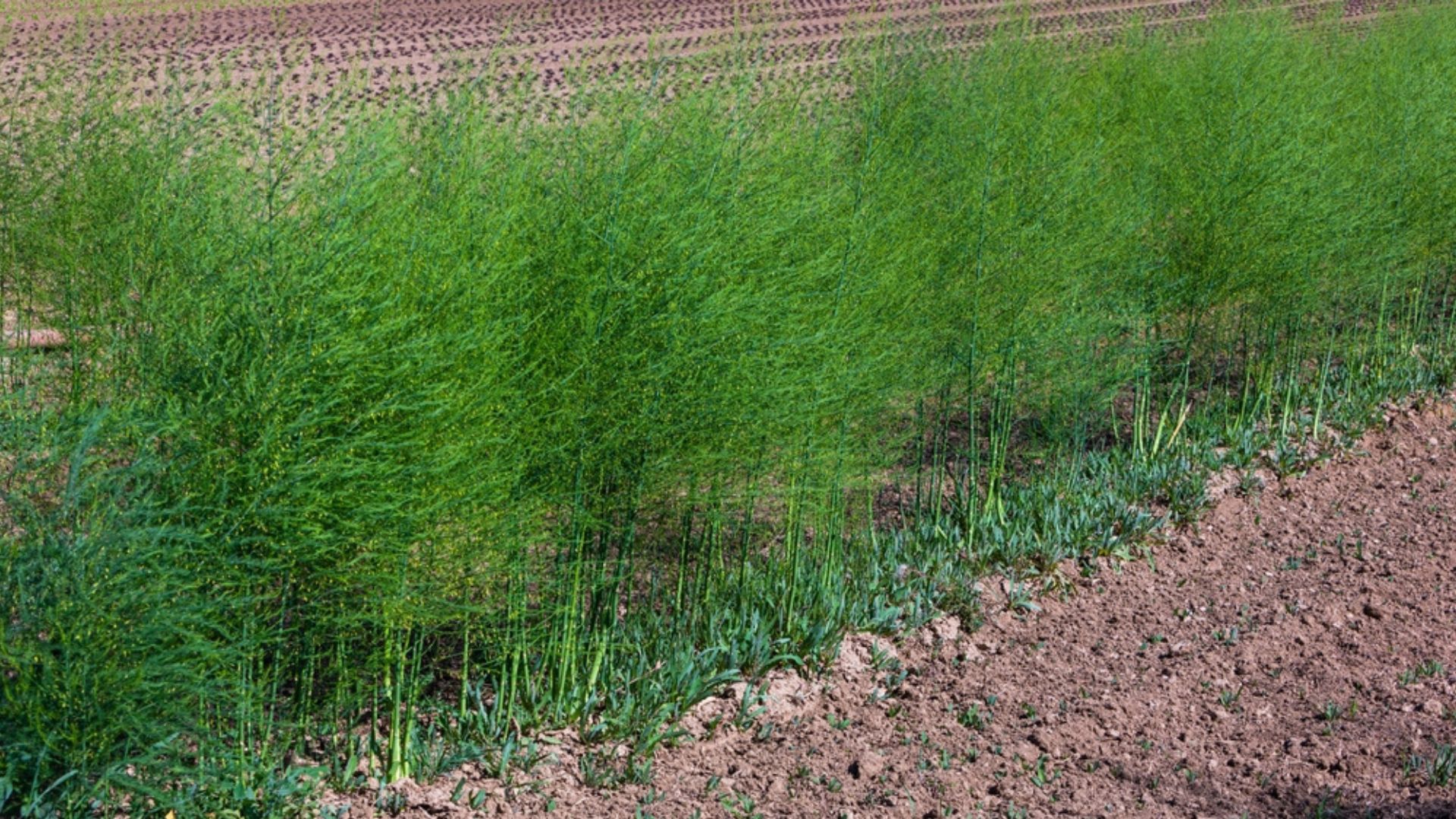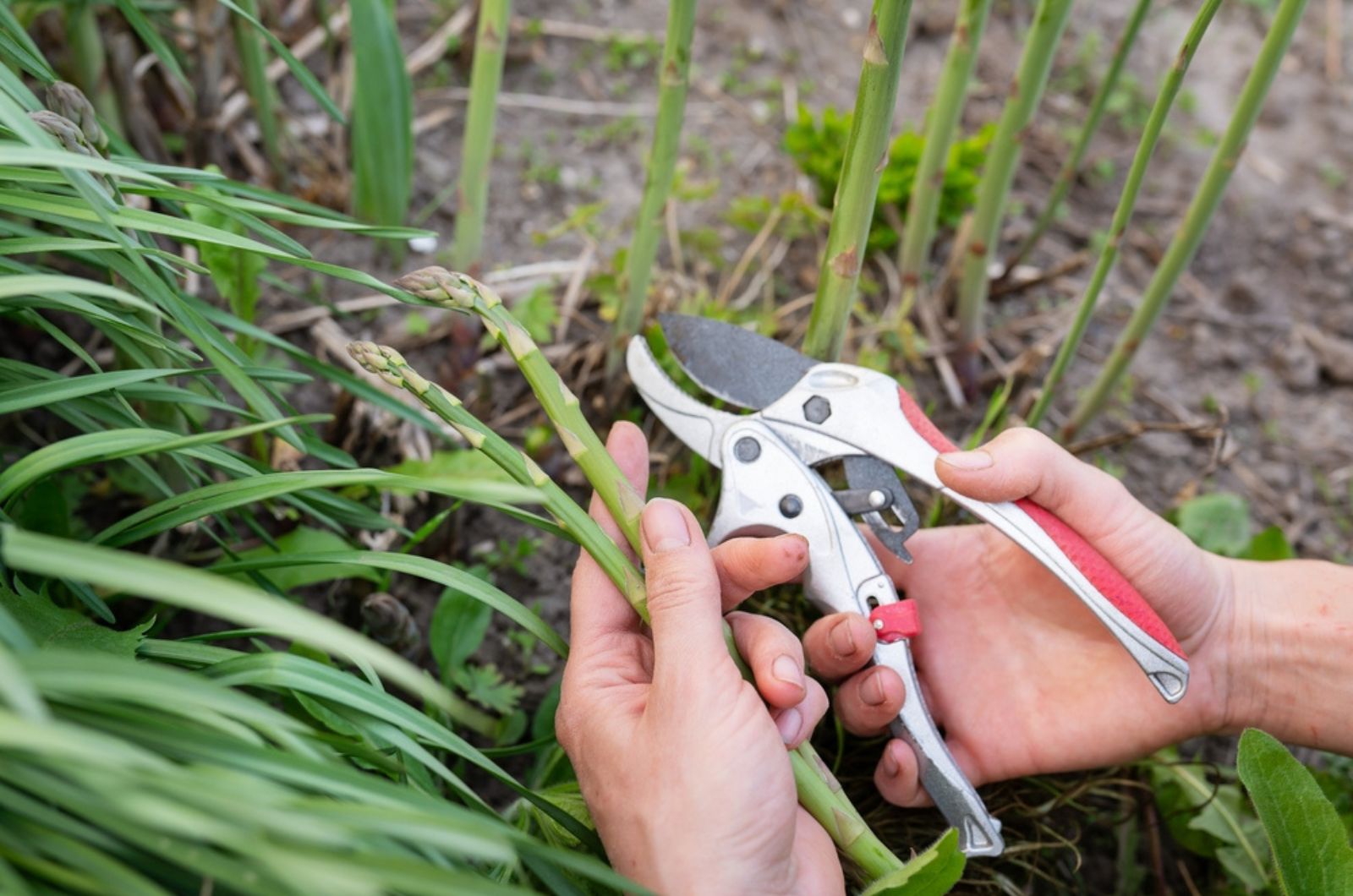Asparagus is a popular crop known for its deliciousness and low-maintenance. However, to have healthy and happy asparagus, it’s crucial to prune them at the right time.
While it’s recommended to trim asparagus plants during their dormant period, the precise timing is determined by various factors such as weather conditions, pest infestations, aesthetic preferences, and time constraints.
Some gardeners make mistakes and prune them early, which can diminish the food stored in the plant’s root that is required for new growth in the spring. So, pruning your asparagus too early might lead to a poor harvest.
In this article, we are going to share some tips that will help you figure out when to prune asparagus tops. Let’s make your asparagus bed flourish!
The Right Time To Prune Your Asparagus Tops
Snip asparagus in late fall or early winter when foliage turns brownish-yellow, or delay to early spring before new growth starts and soil hits 50°F.
It’s a lot easier to prune in the fall because you’ll get rid of decaying foliage and keep your garden nice and tidy during the winter season. Plus, pests like aphids and beetles will have nowhere to overwinter.
Asparagus beetles have bluish-black bodies, and harm asparagus by eating its ferns and reducing food production and plant strength. Since they stay hidden in the shoots during winter, pruning at the start of dormancy eliminates these pests and prevents further damage.
Yet, in some warmer climates, asparagus plants might keep producing food after the first frost, which is why it’s better to do late winter pruning. However, since cutting ferns in the snow isn’t practical, I would recommend you to leave this task for spring.
Delaying pruning allows snow to cover the dead foliage, acting as winter protection and providing the moisture equivalent of 1 inch of rain for the upcoming spring growth.
But, for all those busy gardeners out there that are engaged in activities like mowing and fertilizer application, waiting until spring might not be feasible
Related: 10+ Easy Tips For Planting And Growing Asparagus
Don’t Prune Them Too Early And Add Mulch
Allow asparagus ferns to work longer for better carbon storage and nutrients, which ultimately leads to a healthier harvest. Avoid early pruning to maximize this process, letting frost handle the foliage removal.
You should remove pest-infested fronds to protect production gains. If growing female asparagus plants with red pods, remove the seeds to prevent self-propagation, which can deplete food storage.
When pruning, use sharp hand pruners or hedge clippers, keeping the cut lengths in check. Shave foliage to the ground or leave up to 1-inch stubs to prevent crown rot.
Dispose of chopped leaves as they might harbor pests or their eggs, and avoid tilling as they contribute little to organic content – you could compost them instead.
For winter protection, spread a 4-inch thick layer of mulch with pine shavings, needles, straw, or sawdust around the plant’s base. Remove the mulch in spring to allow new spears to emerge, and enjoy your weed-free garden!
This might be useful: The 7 Stages Of Growing Asparagus: All Your Questions Answered


